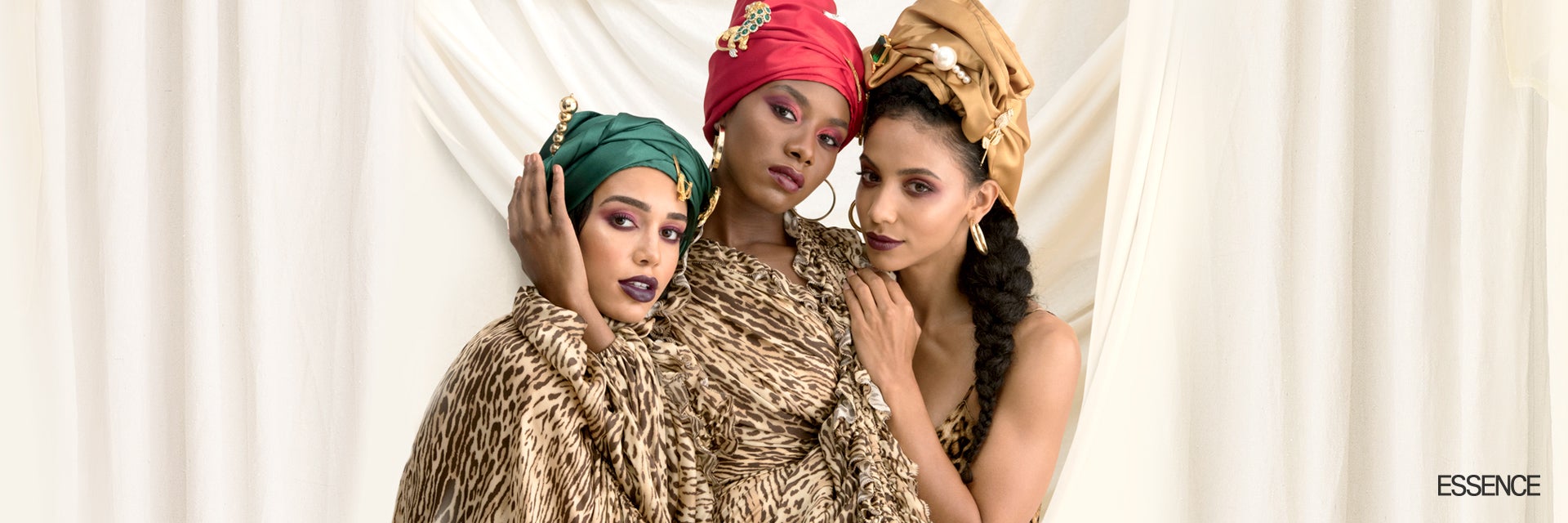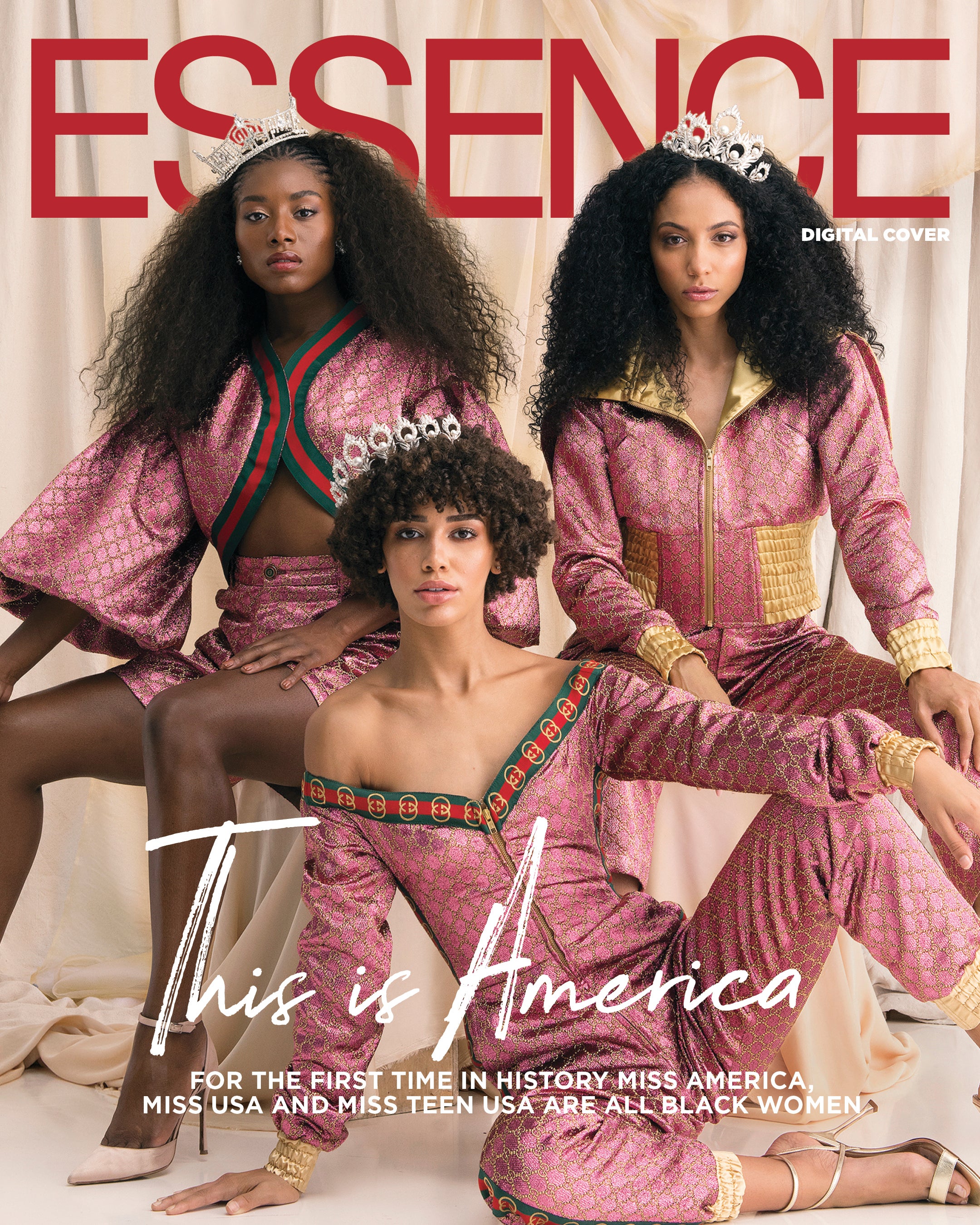
Welcome to the era when Black Women reign supreme. In May 2018, a lone sister from Los Angeles glided down the aisle of St. George’s Chapel at Windsor Castle. Trailing behind her was a 16-foot monarch veil (named after Princess Di) secured to an antique diamond filigree tiara that once belonged to Queen Mary (the one of England, not Hip-Hop Soul). At the end of her runway, Meghan Markle would become a princess of the United Kingdom, bearing the official title Her Royal Highness The Duchess of Sussex. Her Black mama bore witness, sporting crinkly shoulder-length locs beneath a chic celery-colored cocktail hat, tipped stylishly to one side. This spring, less than a year after the U.K.’s first Black princess publicly wore her crown, history was made again when a Black opera singer, a Black lawyer and a Black high school student activist were crowned Miss America, Miss USA and Miss Teen USA, respectively—and two of them had their dazzling bejeweled tiaras placed atop heads of lush natural curls.
“My title and my crown mean a chance to be inclusive. It gives me the opportunity to represent a group that has not always been represented in this country.” —Nia Franklin, Miss America 2019
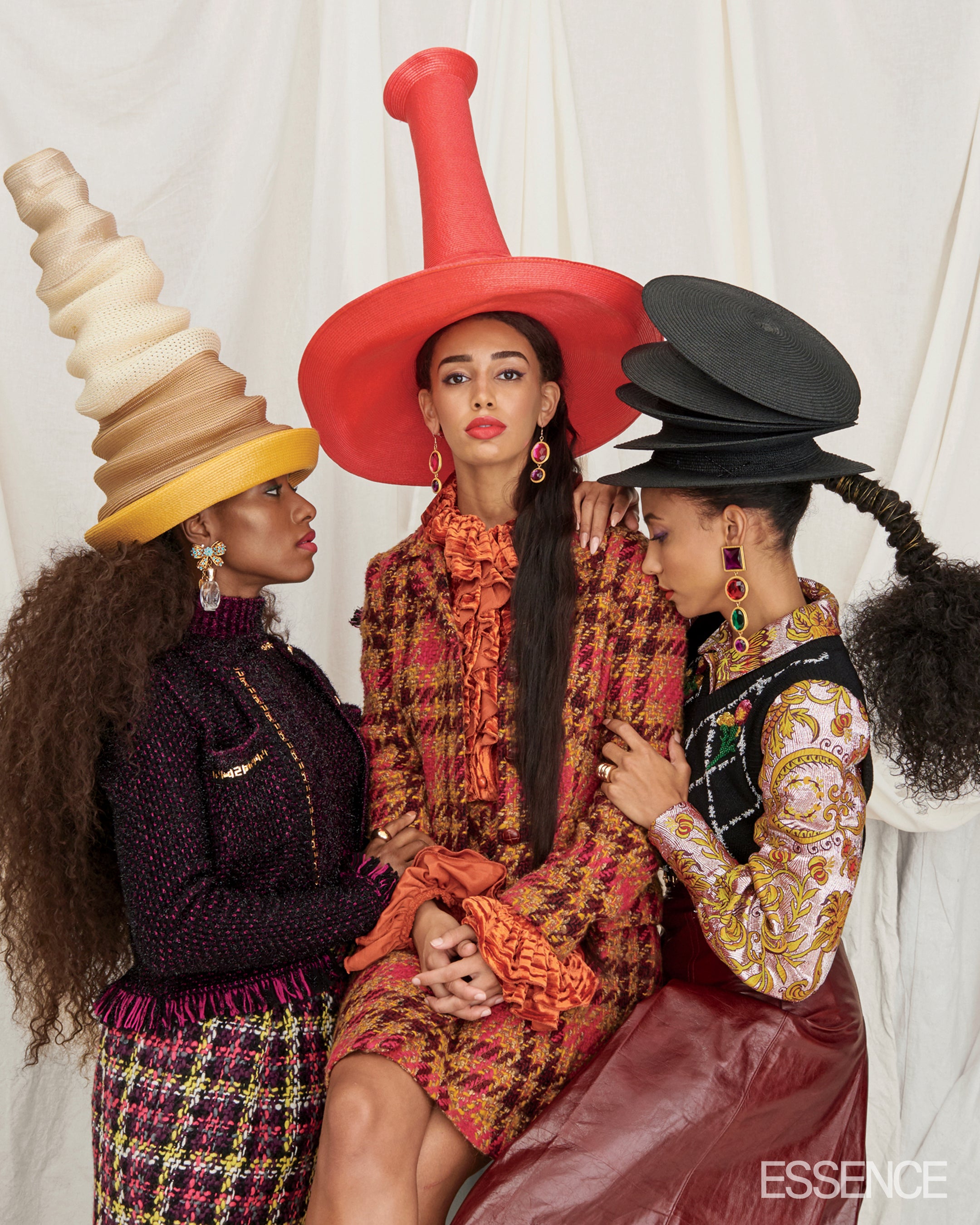
Although we are witnessing the exaltation of Black women’s beauty, desirability, dignity and progress through recent public coronations by Eurocentric institutions (not the least of which was the Church of England), Black women have a long and rich legacy of claiming center stage and crowning our own damn selves. And the original crown was our hair. We’ve always sculpted and adorned our marvelous shape-shifting coils, kinks and curls into elaborate monarchal objects, from the headdress of two feathers on the bust of Ancient Egypt’s Nubian Queen Tiye to Diana Ross’s headpiece of large spheres wrapped in beaded ribbons in Mahogany to the braided halo and do-rag Solange sported at the 2018 Met Gala. And arguably the most powerful and politicized hairstyle in the world, the Afro, is the quintessential crown of resistance and resilience—whether picked out and voluminous like Angela Davis’s at protests or packed in and teeny-weeny like Lupita Nyong’o’s on red carpets.
“Holding this title has made a difference in my life and the life of those around me, not only because I am a woman of color but also because I am biracial.” — Kaliegh Garris, Miss Teen USA 2019
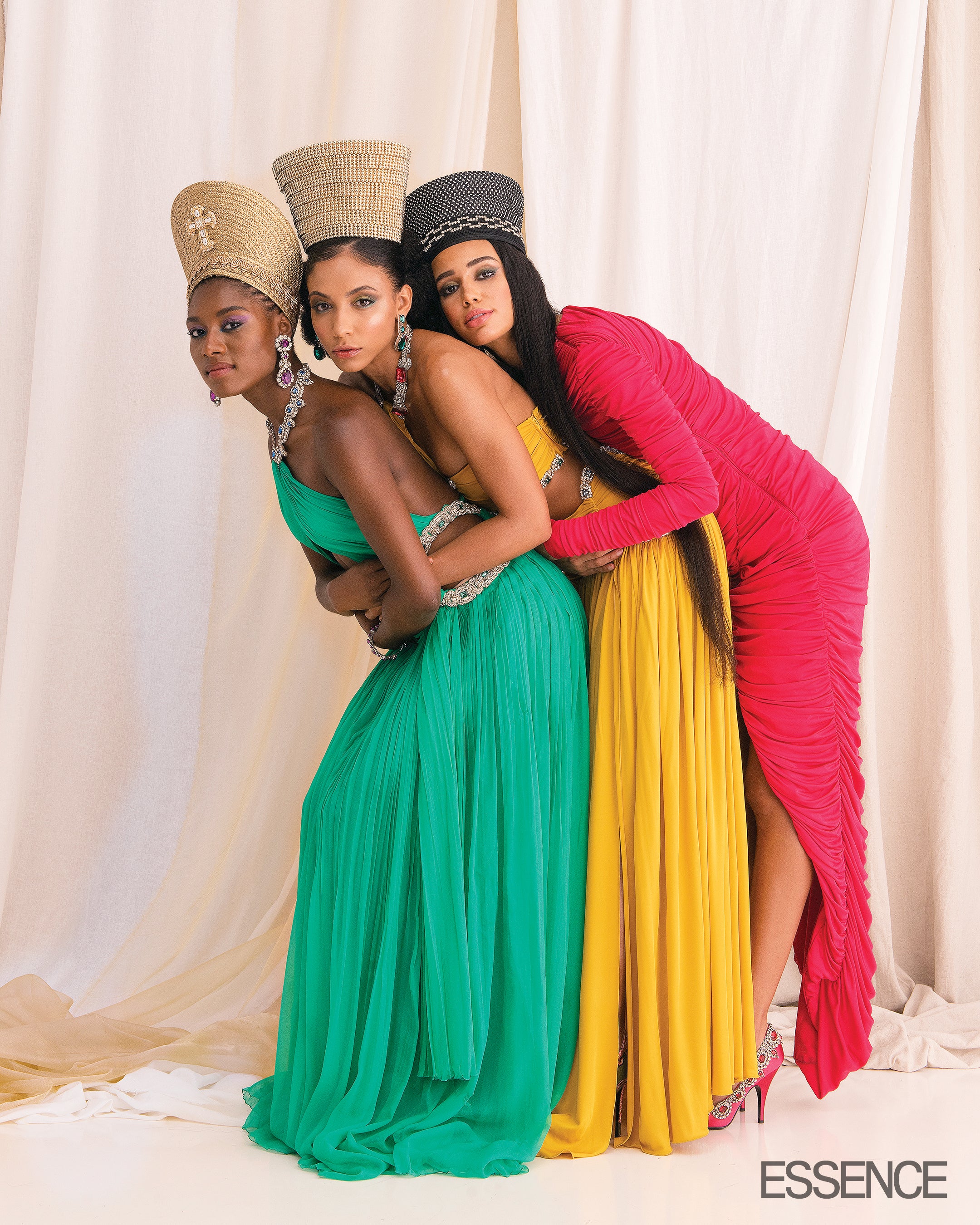
Black women not only create crowns out of our hair, we also crown our crowns in the most majestic ways. We wear elaborate hats and regal head wraps not to hide our hair but to glorify its beauty, creativity and power. Whether Black women are standing on the floor of the Senate or napping in a college dorm lounge, their presence alone is often seen as an act of aggression—yet we refuse to diminish ourselves for the benefit of the underdeveloped vision of others. In the face of the brutality, ignorance and blandness of White supremacy and its standards of beauty, Black women dare to flaunt our flyness by adding extra embellishment to our already radically expressive heads.
“Pageants weren’t always welcoming to women of color. It took decades of persistence and courageous women showing the world a new kind of beauty.” — Cheslie Kryst, Miss USA 2019
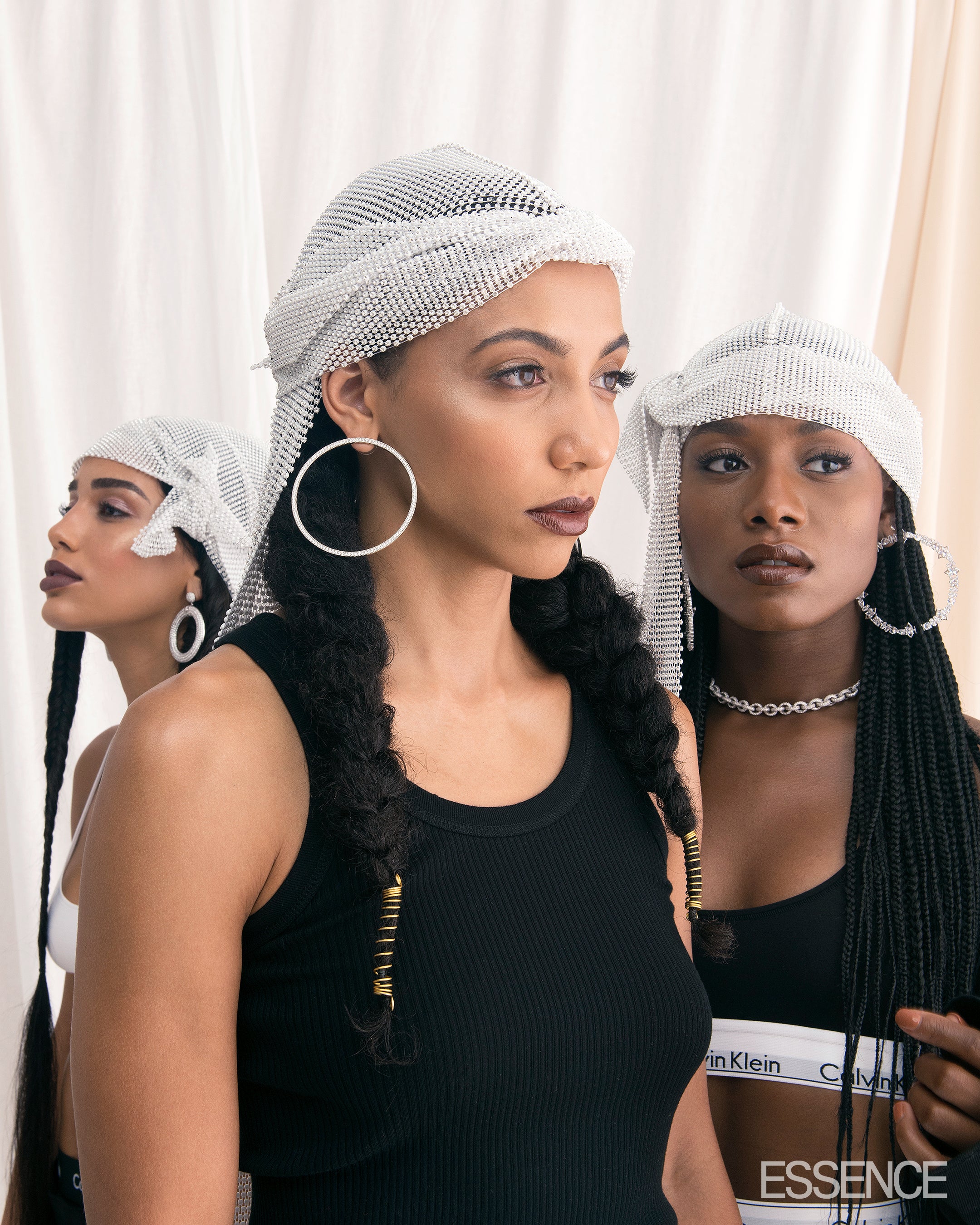
We are only too much for those without enough. Black women have consistently displayed the most diverse, audacious and glorious crowns, from Dana Elaine Owens proclaiming herself Queen Latifah and bedecking herself with tall and proud African fabric headpieces and declaring “All Hail the Queen” on her debut album to the big, blinged-out bow on Aretha Franklin’s charcoal church hat at the 2009 Obama -Inauguration. Then there was Minnie Riperton’s poetic wreath of baby’s breath on the cover of Adventures in Paradise, Winnie -Mandela’s magnificent turbans, Grace Jones’s crystal-encrusted stingy brim bowler projecting miniature lasers from the stage and Erykah Badu’s gravity–defying head wrap on the cover of her Baduizm album. And who can forget a resplendent, pregnant Beyoncé ruling the night in a headdress of golden roses and sunrays at the Grammys?
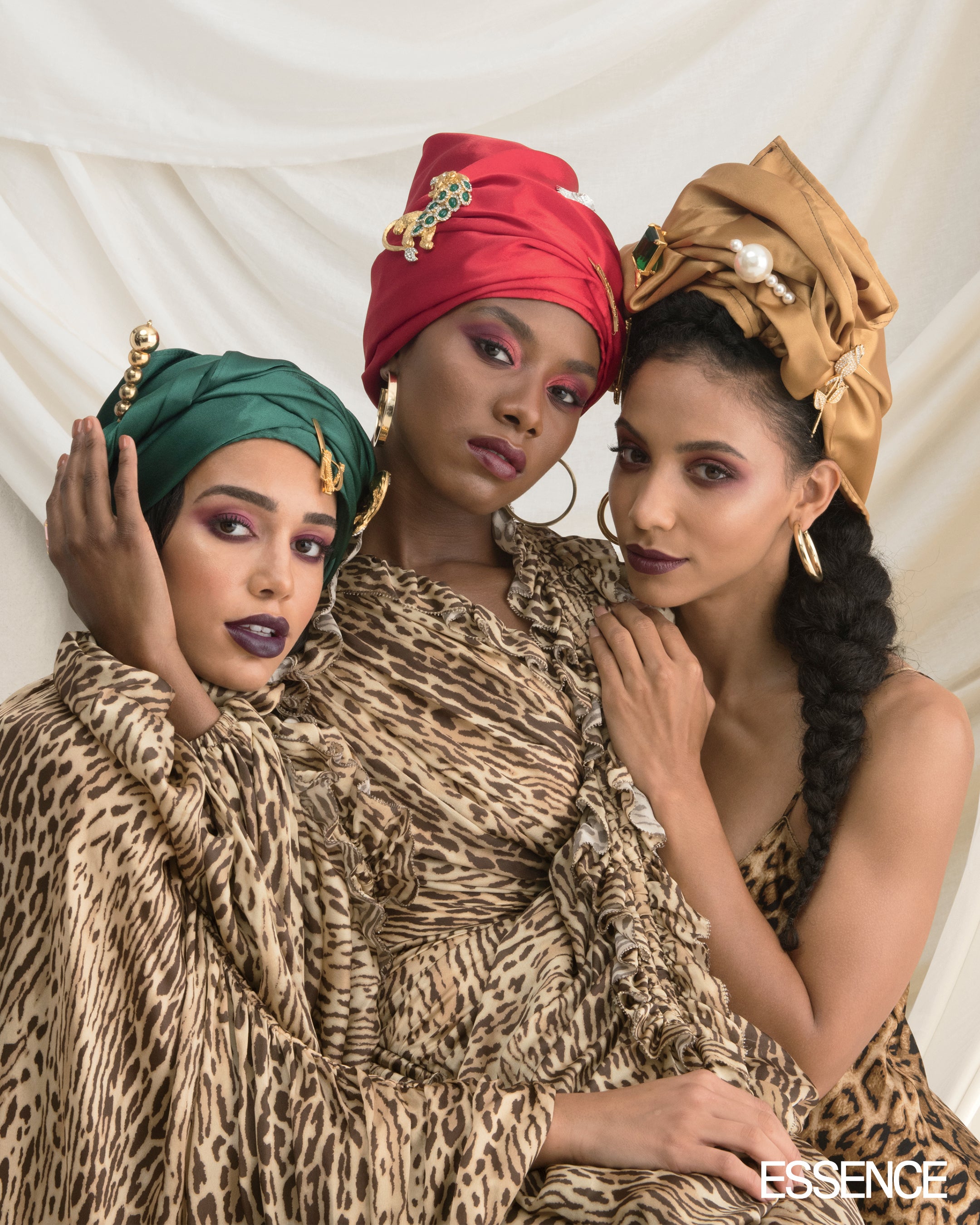
Of course, the most powerful, spectacular and glorious part of a Black woman’s head is how we use it—the revolutionary way we love, the holistic way we organize, the creative way we make, protect and sustain life. And as the whole world knows, when it comes to hair and everything we put in or on it, Black women rule.
Credits
Photography: Timothy Smith
Styling: Mecca James Williams
Makeup: Tara Lauren, Jalessa Jaikaran & Billie Gene
Hair: Monaé Everett, Kendall Dorsey & Stephen Hudson
Set Design: JJ Chan
Additional Reporting: Julee Wilson & Jennifer Ford
